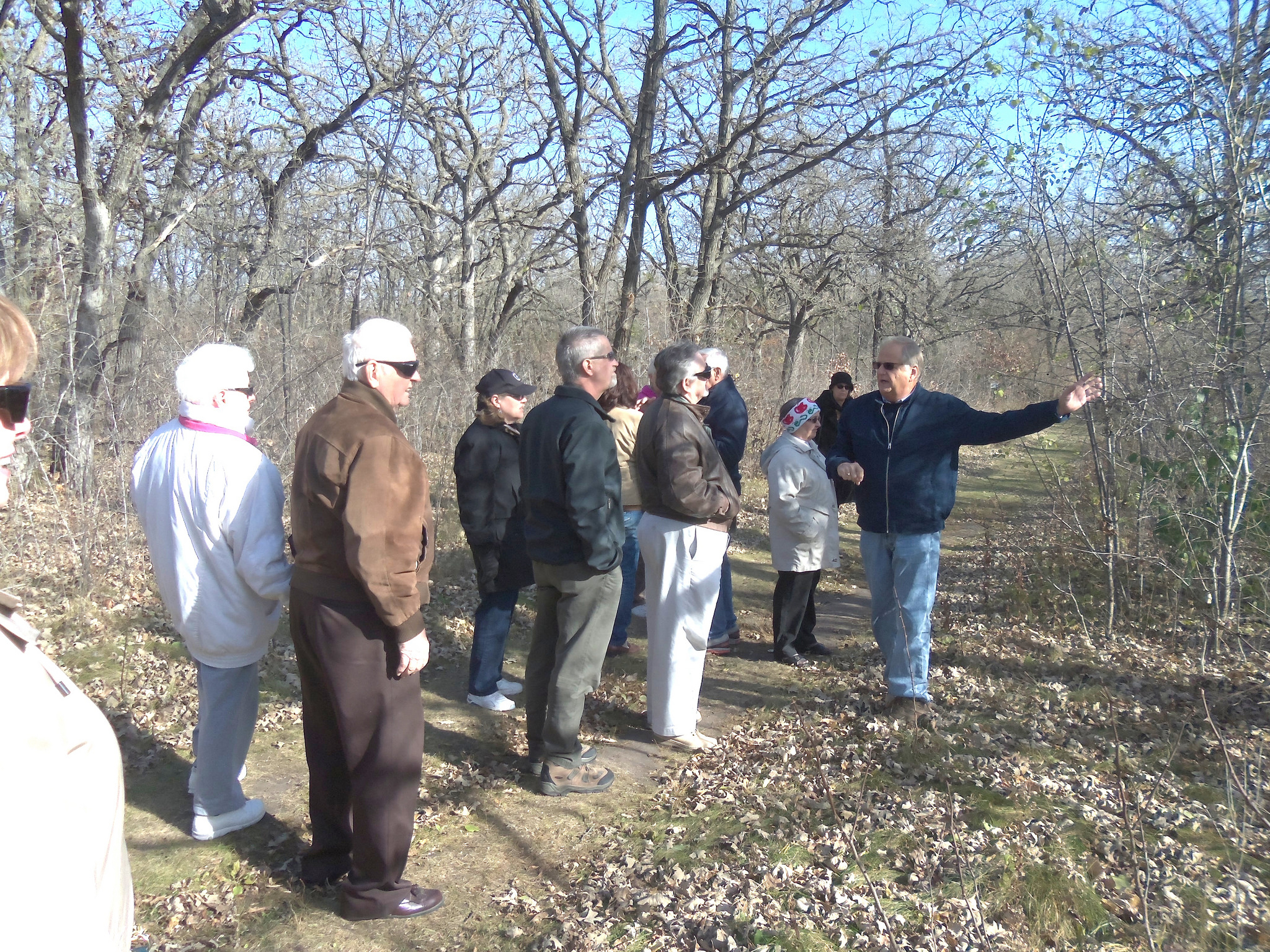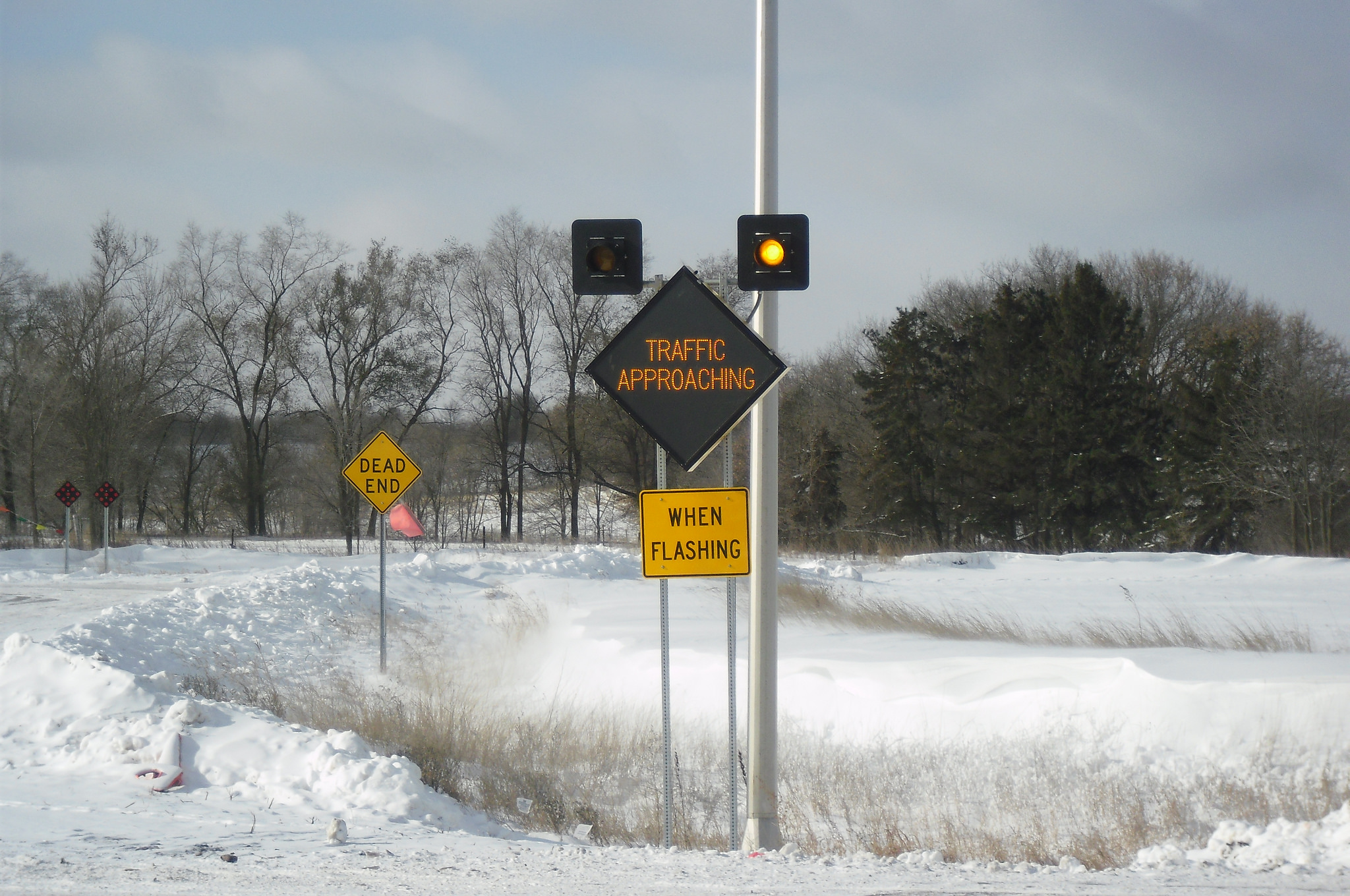by Dennis Dalman
editor@thenewsleaders.com
Sixteen members of Unity Spiritual Center in Sartell communed in prayer with a spiritual ancestor Nov. 2 in Sauk River Regional Park.
During a hiking tour of the park, the group paused at the edge of the Sauk River and listened to the Rev. Barbara Winter-Martin commemorate the St. Cloud-born Charles Fillmore, the man who – with his wife, Myrtle – founded the Unity Movement in 1889. The Unity Spiritual Center is part of that nearly 100-year-old movement.
And in what is an astonishing coincidence the Unity Spiritual Center in Sartell is just a few miles from the place where Fillmore was born – on a place by the Sauk River that may well have been right where Sauk River Regional Park is located now.
The tour was led by Unity member and Sartell City Council member Steve Hennes, who was instrumental in helping get the land acquisition and the upcoming amenities for Sauk River Regional Park.
“Unity’s co-founder, Charles Fillmore, was born next to the Sauk River, close to or in this very park area, on Aug. 22, 1854,” Winter-Martin said right after the tour. “I believe Charles Fillmore would love the creation and expansion of this park as it reflects the indigenous (people’s) belief in ‘no ownership,’ as this land truly now belongs to everyone. It’s also a perfect place to ‘come away’ for a time and commune with nature and one’s internal Divine guidance.”
The Fillmores
It’s not known precisely where Fillmore was born, but it was definitely along the Sauk River in the St. Cloud-Sartell area.
Fillmore’s father was a trader with the American Indians in the area.
When Charles was 10, an ice-skating accident broke his hip and left him with life-long disabilities.
He met his future wife, the Ohio-born Myrtle in Denison, Texas when he was a railroad clerk and she was a schoolteacher suffering from tuberculosis. Married in Clinton, Mo., the Fillmores went on to have three sons and established many homes, moving from jobs to jobs, mainly throughout the American West.
In 1884, in Kansas City, Mo., they invested their meager savings in real estate and lost it all. That is when they started the Modern Thought Publishing Co. in 1889 and later the Unity School of Christianity in 1914.
Their printing business and their publications about spirituality went hand in hand to disseminate their thoughts. Later they added a radio station and magazines for adults and children.
In 1929, the Fillmores moved to Lee’s Summit, Mo., which became known as Unity Village in the 1950s, which is still the world headquarters of the Unity movement.
Myrtle died at 86 in 1931, and Charles, who had remarried in 1933, remained very active in the Unity movement until his death at 93 in 1948.
The Unity church the Fillmores founded was part of their “New Thought” movement and based on spiritualist interpretations of biblical scripture.
The tenets of the interdenominational Unity movement, as propounded by the Fillmores and their adherents, is that “God is good, God is available and God is in you.” Unity religion is described as a practical form of Christianity in which a positive attitude to life is developed that seeks good in all people and events, with no particular creed or dogma written in stone.
In addition, Unity adherents embrace differences and encourage diversity in order to foster spirituality for the good of all. Of special value are affirmative prayers and positive thoughts inspired by an inner knowledge that God is everywhere and in everyone. The true “Church,” Unity adherents claim, is “a state of consciousness in human beings” that allows people to live spiritually and happily every day without merely thinking or preaching about it.
Noted people who were or part of the Unity movement are poet Maya Angelou, actresses Betty White and Patricia Neal and entrepreneur Wally Amos.
The Fillmores, who were strict vegetarians, were convinced their love of God and faith in his works cured Myrtle of tuberculosis and Charles of his physical disabilities.
The Park
Besides the pause for prayer and thoughts of Charles Fillmore, the 16 hikers on their Nov. 2 walk also learned from tour guide Hennes some of the remarkable features and history of the 44-acre park. Comprised largely of oaks and maples, the pristine parkland is located just east of the road that runs on the east side of Epic Center, the mall where Walmart, Sam’s Club and other businesses are located. The Sauk River winds through the parkland, and just across the river at one point is Whitney Park in St. Cloud. A sturdy tall wooden footbridge connects the two parks. St. Cloud also owns some of the parkland, but the park is accessible by one and all, being a truly regional amenity.
In time, the City of Sartell hopes to develop Sauk River Regional Park for all kinds of recreation, including hiking, biking, snowshoeing, cross-country skiing, water recreation and picnics. So far, the city has constructed a long, narrow parking lot at the park’s entrance and the start of a bituminous trail leading into the park. The thickly wooded land already has a network of interconnected trails, yet to be paved, on which it’s possible to walk.
Some hikers on the Nov. 2 park tour had never been in the park previously. They remarked about what a fine addition it is for the people of Sartell and the entire area. Several said it’s a good natural resource to have so close to Epic Center and the busy traffic of the city. Some also noted land for Epic Center had been created by cutting down a wooded area, practically overnight, destroying an eagle’s nest in the process. This new park, some noted, is a good “counterpoint” and “consolation” to the wooded land that was lost to developments.
From the timeline of Sauk River Regional Park development:
1970s: Stearns County identifies the “Dehler property” area a potentially ideal site for a future regional park.
2007: The Dehlers (brother and sister LaVerne and Ralph) offer to sell their 68 acres of property. State officials visit the site in consideration for providing money for the parkland in its bonding bill.
2008: Gov. Tim Pawlenty visits the site. Sartell is informed there will be $500,000 in the state bonding bill for acquisition of the Dehler property.
2009-2013: Appraisals, purchasing offers, negotiations and grant requests continue. A state Legacy grant is announced, and after more negotiations the city, in February 2013, agrees to purchase 44 acres of the Dehler property, contingent on reauthorization of the $500,000 amount in the 2008 state bonding bill.
2014: Work begins at the park site, which includes a parking lot and the beginning of a paved trail system. Other amenities will follow as funds become available.
How to get there
To get to Sauk River Regional Park, take Delores Drive, which is near the roundabout on CR 120 just east of the Sam’s Club. Follow Delores Drive to the north for a few blocks to a dead end, then take a right that leads right onto the park’s long paved parking lot.
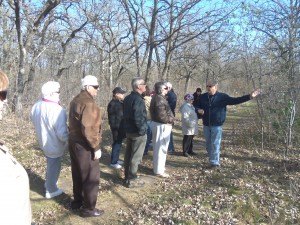
Tour guide Steve Hennes points out features of Sauk River Regional Park during a tour Nov. 2.
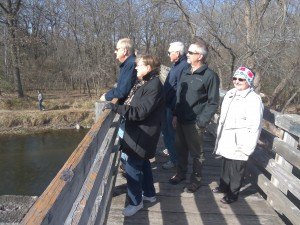
A tour group, all members of Unity Spiritual Center in Sartell, pause for a view at the walking bridge that connects Sauk River Regional Park to Whitney Park in St. Cloud. From left to right are tour guide Steve Hennes, Sartell; Kris Bahl, St. Cloud; Duane Nieters, Rice; Dan Haskamp, Sartell; and Ruth Duhamel, Oak Park.
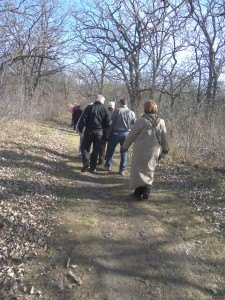
A tour group walks down one of the many interconnected paths during a hiking tour Nov. 2 at Sauk River Regional Park.
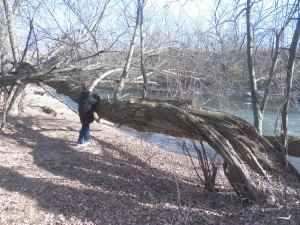
Kris Bahl, a member of the Unity Spiritual Center, leans against a fallen tree to take in a view of the Sauk River during a tour of Sauk River Regional Park Nov. 2.
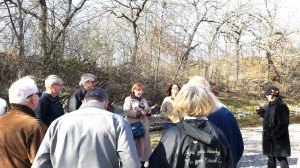
The Rev. Barbara Winter-Martin (center, rear) reads in honor of Charles Fillmore, the co-founder of the Unity Movement, which gave rise to Unity spiritual centers throughout the world, including the one in Sartell. Sixteen members of the church toured Sauk River Regional Park in Sartell Nov. 2, which is where or near where Fillmore was born Aug. 22, 1854.
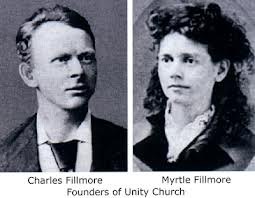
Charles and Myrtle Fillmore are co-founders of the Unity Movement, which gave birth to the many Unity spiritual centers in the world, including the one in Sartell.



